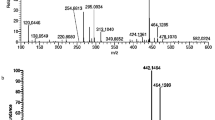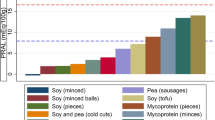Abstract
KERGUELEN Island, in the Antarctic Ocean, equidistant from South Africa and Western Australia, has a very limited flora, of which the Kerguelen cabbage (Pringlea antiscorbutica) is the most striking species. Captain Cook, who visited the Island on his third and last voyage, found "not a single tree or shrub anywhere"and would have given it the name Island of Desolation "but that I would not rob Monsieur de Kerguelen of the honour of it bearing his name". With Cook's interest in combating scurvy, it was certain that he would seek to use this plant as a vegetable. Anderson, Cook's surgeon, describes the plant and its use. "It was not much unlike a small cabbage"having "not only the appearance, but the watery acid taste of the antiscorbutics". It was eaten frequently raw, "but it seemed to acquire a rank taste by being boiled ; which however our people did not perceive and esteemed good". Anderson recommended that it should be introduced into kitchen gardens and improved by cultivation1.
This is a preview of subscription content, access via your institution
Access options
Subscribe to this journal
Receive 51 print issues and online access
$199.00 per year
only $3.90 per issue
Buy this article
- Purchase on Springer Link
- Instant access to full article PDF
Prices may be subject to local taxes which are calculated during checkout
Similar content being viewed by others
References
Cook, J., "A Voyage to the Pacific Ocean undertaken by the Command of His Majesty for making Discoveries in the Northern Hemisphere". 1, 85 (2nd edit., 1785).
Hooker, J. D., "Flora Antarctica", 2, 239 (1847).
Kidder, J. H., "Contributions to the Natural History of Kerguelen Island made in connection with the American Transit of Venus Expedition, 1874–5". Smithsonian Miscel. Coll., 13, 22 (1875–76).
Rallier du Baty, R., "Fifteen Thosand Miles in a Ketch," 178 (Nelson, London, 1911).
Lugg, J. W. H., Aust. J. Exp. Biol. and Med. Sci., 20, 273 (1942).
Snow, G. A., and Zilva, S. S., Biochem. J., 37, 696 (1943).
Allen, R. J. L., Barker, J., and Mapson, L. W., J. Soc. Chem. Indust., 62, 145 (1943).
Anon, "The Ascorbic Acid and Carotene Content of Some Australian Fruits and Vegetables", J. Coun. Sci. Ind. Res. (Aust.), 20, 1 (1947).
Author information
Authors and Affiliations
Rights and permissions
About this article
Cite this article
HATT, H. Vitamin C Content of an Old Antiscorbutic : The Kerguelen Cabbage. Nature 164, 1081–1082 (1949). https://doi.org/10.1038/1641081a0
Issue Date:
DOI: https://doi.org/10.1038/1641081a0
Comments
By submitting a comment you agree to abide by our Terms and Community Guidelines. If you find something abusive or that does not comply with our terms or guidelines please flag it as inappropriate.



